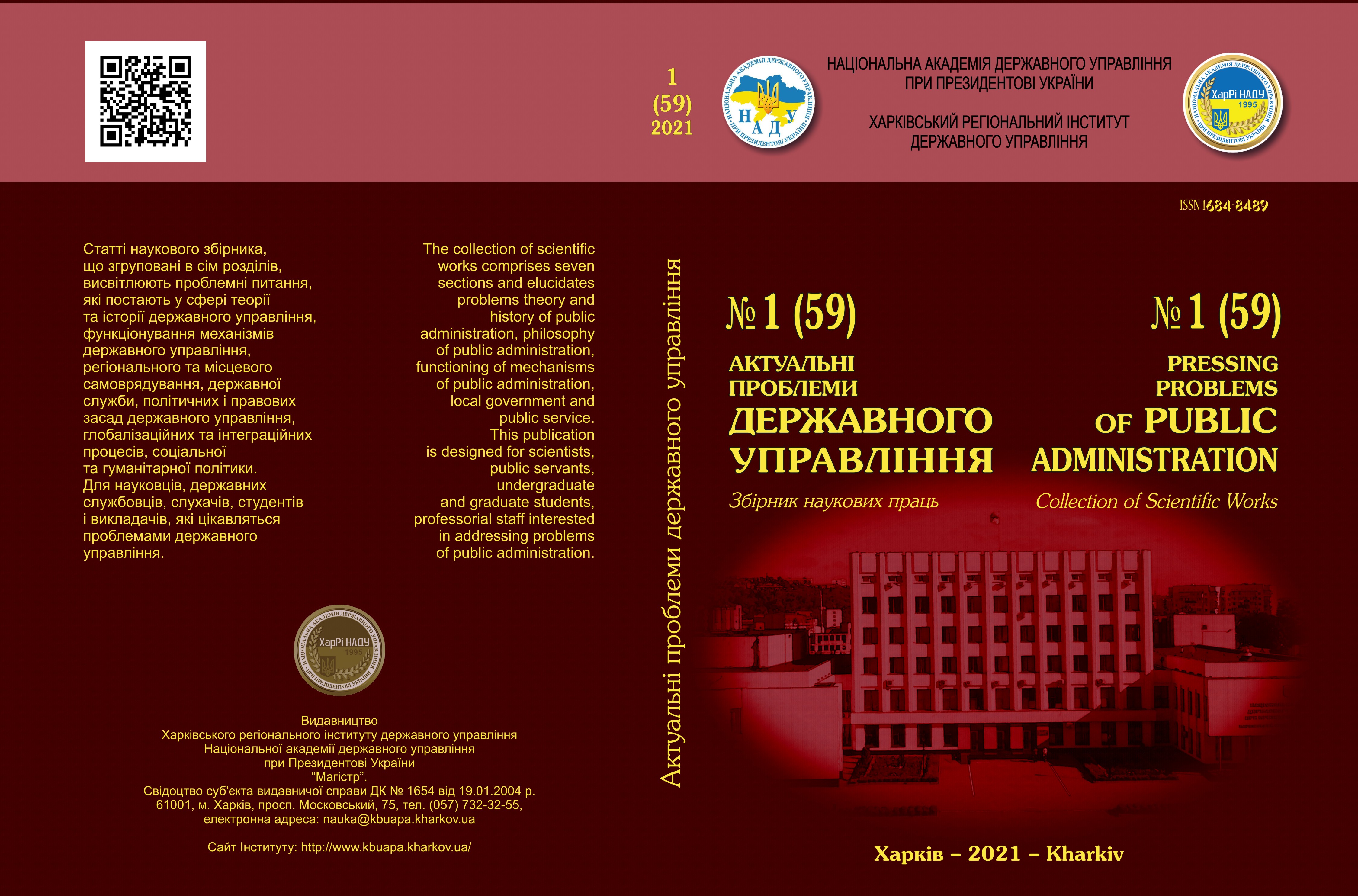PREREQUISITES FOR CORRUPTION
Abstract
The study concludes that the current interest in corruption is due to the gradual increase in the scale of this negative phenomenon, its impact on business conditions, distortion of market mechanisms and increase the costs of corruption.
Discretionary political decisions create the illusion of being able to influence them, in some cases through bribery, and in others simply by using close personal relationships with civil servants. The probability of making a “favorable” decision for the persons concerned increases inversely proportional to the level of salaries of civil servants and the severity of punishment for abuse of power.
Sometimes, due to limited supply, rationing or significant time, there is an excessive demand for certain services, which leads to the problem of distribution of limited supply and decision-making by civil servants. Such situations are also a source of corruption, which is confirmed by registered cases of corruption in all the above areas.
Among the potential sources of corruption (in fact, political corruption) it is also necessary to mention the use of state-owned enterprises to finance the activities of political parties and provide jobs to clients of certain political groups.
In all these areas, lack of transparency and effective institutional control are the main factors leading to corruption. The lack of politically motivated hiring, patronage and nepotism, as well as clear career rules, all contribute to the quality of the bureaucracy. A transparent system of incentives and established traditions largely explain why some bureaucracies are much less corrupt than others.
It has been established that the fight against corruption, which is carried out solely on the basis of wage increases, requires significant budget expenditures, while it can only be partially successful. In addition, as noted above, even with high wages, some individuals may continue to engage in corrupt practices.
Theoretically, other things being equal, corruption can be reduced by increasing punishment. That is, higher penalties, at least in theory, can reduce corruption, but can also increase bribes.
Downloads
References
Indeks spryiniattia koruptsii-2020. URL: https://ti-ukraine.org/research/indeks-spryjnyattyakoruptsiyi-
/ [in Ukrainian].
Nysnevych, Yu.A. (2015). Korruptsyia v ystorycheskoi retrospektyve s utochnenyiamy y dopolnenyiamy. Obshchestvennыe nauky y sovremennost, 3. URL: http://ecsocman.hse.ru/data/2018/08/05/1251869475/90-100_Nisnevich.pdf [in Ukrainian].
Pro zatverdzhennia Metodolohii provedennia antykoruptsiinoi ekspertyzy: nakaz Ministerstva yustytsii Ukrainy vid 24.04.2017 № 1395/5. (2017). URL: https://zakon.rada.gov.ua/laws/show/v1395323-17#Text.
Becker, Gary S. (1968). Crime and Punishment: An Economic Approach. Journal of Political Economy, Vol. 76 (March/April), 169–217.
Brunetti, Aymo and Beatrice, Weder (1998). A Free Press Is Bad News for Corruption. WWZ Discussion Paper No. 9809. Basel: Weltwirt – schaftswissenschaftliches Zentrum der Universitat.
Freedom in the World: The Annual Survey of Political Rights and Civil Liberties. URL: freedomhouse.org.
Haque Nadeem Ul and Ratna Sahay. (1996). Do Government Wage Cuts Close Budget Deficits? Costs of Corruption. Staff Papers. International Monetary Fund, Vol. 43 (December), 754–778.
Kopits George and Jon Craig. (1998). Transparency in Government Operations. IMF Occasional Paper No 158. DOI: http://dx.doi.org/10.5089/9781557756978.084.
Lindbeck, Assar (1998). Swedish Lessons for Post-Socialist Countries. Stockholm: University of Stockholm Institute for International Economic Studies. Seminar Paper № 645. URL: https://www.researchgate.net/publication/5075081_Swedish_Lessons_for_Post-Socialist_Countries.
Rauch, James E. and Peter, B. Evans. (1997). Bureaucratic Structure and Bureaucratic Performance in Less Developed Countries. San Diego, California: University of California at San Diego and University of California at Berkeley. Journal of Public Economics, Vol. 75 (2000). Р. 49–71. URL: https://citeseerx.ist.psu.edu/viewdoc/download?doi=10.1.1.203.288&rep=rep1&type=pdf.
Rose-Ackerman, Susan. (1997). Corruption and Development. Paper prepared for the Annual Bank Conference on Development Economics. Washington, April 30 and May 1.
Shleifer, Andrei and Robert, Vishny. (1993). Corruption. Quarterly Journal of Economics, Vol. 108 (Augustm), 599–617.
Tanzi, V. (1998). Corruption and the Budget: Problems and Solutions. Economics of Corruption: ed. by Arvind K. Jain. Boston, Massachusetts: Kluwer Academic Publishers, 111–128.
Tanzi, Vito and Ludger, Schuknecht. (1997). Reconsidering the Fiscal Role of Government: The International Perspective. American Economic Review, Papers and Proceedings, Vol. 87 (May), 164–168.
Van Rijckeghem, Caroline and Beatrice, Weder. (1997). Corruption and the Rate of Temptation: Do Low Wages in the Civil Service Cause Corruption? IMF. Working Paper 97/73. URL: https://www.imf.org/external/pubs/ft/wp/wp9773.pdf.
Weber, Max. (1947). Еssays in sociology. New York: University Press.
World Business. URL: https://www.journals.elsevier.com/journal-of-world-business.

